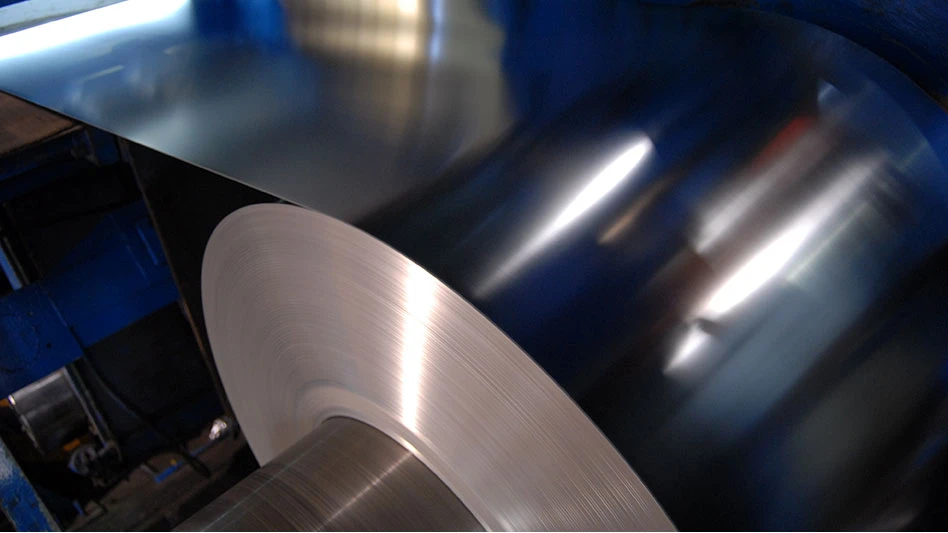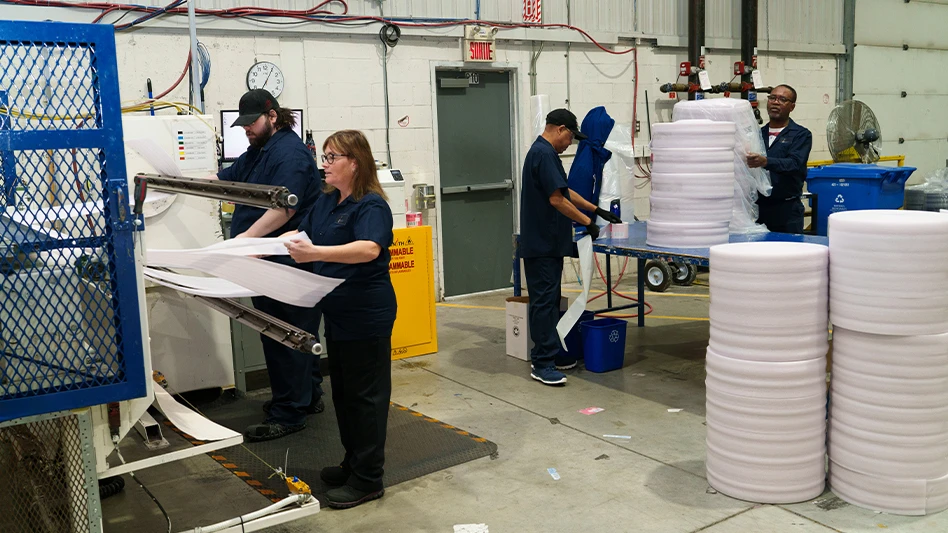A trio of ferrous scrap executives expressed concern about the short-term future for ferrous scrap at the 2014 Middle East Metals Recycling Conference in Dubai March 2-3. However, longer term, a growing global economy will likely strengthen end markets for steel and ferrous scrap, a key raw material.
Adam Smith, who covers the steel industry in the Middle East for Platts, gave a country-by-country analysis. In his remarks, he noted that steel markets are one of the few positive indicators for steel globally. While noting that oil GDP (gross domestic product) stagnated in 2013, he expects it to recover this year to around 4 percent, partly due to higher demand and Saudi output.
Smith’s presentation looked at individual countries, noting that while there are obstacles that need to be crossed, there are positive indicators in many regions.
Meanwhile, political and social issues, which roiled a large part of the region, will start to stabilize. This will likely result in an increase in private investment, which will boost steel markets in many parts of the region.
As an example, Smith said that there are nearly $400 billion of infrastructure projects slated to be built in Saudi Arabia by 2015. Meanwhile, underperforming oil supply in Algeria, Libya and Nigeria will benefit the Kingdom of Saudi Arabia.
Egypt, Smith pointed out, could be the largest economy in the Middle East in the future. With a population of 83 million and significant spending slated to take place in the future, perhaps $12 billion, there is strong opportunity for future growth in demand for steel. Smith said the steel per capita use of 95 kilograms in the country is very low compared to the world average. Rebar and wire rod consumption at 7 million metric tons is now at 5.5 million metric tons.
Reflecting the opportunity for steel in Egypt going forward, Smith noted that there are seven new steelworks coming on line.
Turkey continues to be one of the most closely watched steel producing countries in the world. At the present time, Smith said, the largest producer of steel in the region is a significant producer of steel from electric arc furnace (EAF) operations. A cautionary tone is the move by Turkey to source more of its ferrous scrap from domestic sources, which could cut into demand for the material from outside the region.
Turkey is sourcing more scrap from local sources. The result is that imports of the raw material (ferrous scrap) declined by 12 percent in 2013 to 19.72 million metric tons.
Also creating some possible challenges for the ferrous scrap market in the Middle East, the growth in natural gas reserves and EAF-based steelmaking could result in a sharp increase in direct reduced iron (DRI) production capacity through the region.
Because of this, steelmakers in Iran, Egypt, Saudi Arabia, Oman and Kuwait who traditionally used scrap as a raw material, will switch to using more DRI, although Iraq and Turkey will likely stick to scrap.
As for the region in general, Smith pointed out that there are a number of approaches taking place at the present time that should help generate more material for domestic sources. Abu Dhabi-based Khamis Al Rumaithy is building a shipbreaking yard in the United Arab Emirates to produce scrap that will supply steelmakers in the region. The location could ultimately provide around 3 million metric tons of capacity to steel mills.
Military equipment from the United States could boost the supply of ferrous scrap to Afghanistan steel mills. However, only six steel mills in the country are presently operating, due mainly to the shortage of scrap.
Looking to the future, Smith said that iron ore supply shortages could arise by 2030, making scrap more valuable. Also, he said he sees global scrap trade increasing from 9.3 million metric tons in 1990 to 106.6 million metric tons in 2012, and 1 billion metric tons of new arisings could be reached by 2050.
The issue, however, is that while in North America and Europe the recycling rate of scrap arisings is high, the rate in developing countries is insufficient.
With global steel demand forecast to grow, scrap is becoming a strategic resource, meaning there is likely to be an increase in international regulation, such as export and import tariffs, restricting its trade.
A further concern is the growth of large scrap dealers, three or four of which could dictate prices in future.
Kramer pointed out that the scrap metal industry has become a highly capital intensive business. An example, he said, is that the number of auto shredders in operation in the United States has more than doubled over the past 20 years, from less than 150 to more than 300 today.
Consolidation also is playing a greater role in the market, with large companies acquiring local scrap metal facilities.
One challenge is heightened regulatory oversight. “With the challenge comes opportunities,” Kramer said.
Breaking out the supplies of ferrous scrap, Kramer noted that obsolete scrap typically account for half of the ferrous scrap. “While significant amount of scrap came from the last two run ups,” he added.
The demand for ferrous scrap by region, Kramer said, shows that the South Central U.S. consumed the most ferrous scrap, around 39 percent; the North Central, 31 percent; the South Atlantic and Mid-Atlantic and New England area, both at 12 percent; and the Mountain and Pacific region, consuming 6 percent.
“The result has been more ferrous scrap being exported from the West Coast, around 41 percent, more than any other region,” he pointed out. However, the move toward exporting the material “has left the region vulnerable to shifts in buying patterns from export markets.
“Overseas demand continues to weaken,” Kramer said. Overall, exports of ferrous scrap in 2013 were down 13 percent in volume, compared with 2012. “The overall drop came from Turkey, Taiwan, India and other regions,” he said.
Despite the growth in scrap, Kramer highlighted the challenging environment for the scrap metal industry in the western United States.
For a scrap dealer on the West Coast, Kramer noted that increased competition for available feedstock domestically has resulted in margin compression. Also, uneven manufacturing growth and competition from iron ore and scrap substitutes and a strong U.S. dollar has challenged the domestic steel and scrap metal industry.
For West Coast operators, Kramer said new and potential regulatory changes and trade restrictions are making it more difficult for the scrap metal industry on the West Coast.
One area that is causing the greatest concern has been the decline in manufacturing in the western United States. Manufacturing output in the United States continues to contract, especially on the West Coast.
Kramer said, “While a reported uptick in 2012, the line shows that it is well below recession levels. Regulation has had a huge impact on California manufacturing.”
Critically important, manufacturing is not only reason. Shifting demand from other regions in the country also plays a role.
The final speaker on the ferrous panel was Evangelos Chjatzigiannis with the ship recycling firm GMC Inc., Dubai. In his presentation, Chjatzigiannis addressed much of the misperceptions with the ship recycling sector. As a cash buyer, he noted that companies such as his play a significant role in the recycling of vessels. “Negotiations have to be conducted with limited number of buyers, rather than a multitude of ship recycling yards in several different countries,” Chjatzigiannis said.
GMS itself, he added, is becoming more involved in more complicated projects, such as discharging cargoes and taking over vessels that have been damaged. Additionally, the company also is looking to become more involved in insurance and salvage materials.
Reflecting the growing importance of the cash buying and ship recycling business, he pointed out that in 2012 alone, roughly $5.1 billion worth of scrap vessels were purchased for recycling, whereas in 2013 the total worth of scrap ships was around $4.1 billion.
Although ship breaking takes place throughout the world, the majority of active yards are located in developing countries, especially on the Indian subcontinent. The country with the most ship recycling facilities continues to be India, with between 160-170 yards. Other countries with sizable ship recycling facilities include Bangladesh, with around 110; Pakistan, 80; China, 16; and Turkey, 20. In fact, Chjatzigiannis said that the five countries recycle more than 95 percent of the world’s fleet.
The 2014 Middle East Metals Recycling Conference was March 2-3 at the JW Marriott Marquis in Dubai.
Latest from Recycling Today
- Nucor names new president
- DOE rare earths funding is open to recyclers
- Design for Recycling Resolution introduced
- PetStar PET recycling plant expands
- Iron Bull addresses scrap handling needs with custom hoppers
- REgroup, CP Group to build advanced MRF in Nova Scotia
- Oregon county expands options for hard-to-recycling items
- Flexible plastic packaging initiative launches in Canada





